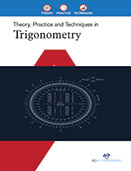Mathematics

Trigonometry was emerged in the third century BC involving applications from astronomy to geometric studies. Now it has spread its application in various fields like engineering, physics, surveyors, architects, astronauts and even in the investigation of a crime scene. Apart from astronomy and geography, trigonometry is applicable in various fields like satellite navigation, developing computer music, chemistry number theory, medical imaging, electronics, electrical engineering, civil engineering, architecture, mechanical engineering, oceanography, seismology, phonetics, image compression and game development. Trigonometry may not have its direct applications in solving practical issues, but it is used in various things that we enjoy so much. For example music, as you know sound travels in waves and this pattern though not as regular as a sine or cosine function, is still useful in developing computer music. A computer cannot obviously listen to and comprehend music as we do, so computers represent it mathematically by its constituent sound waves. And this means sound engineers need to know at least the basics of trigonometry.
“Theory, Practice and Techniques in Trigonometry” introduces trigonometry, including triangles, square roots, and the Pythagorean Theorem, with problem solving techniques and many examples. It is concerned with various properties of trigonometric functions and the applications of those functions to determine the unknown angles and sides of a triangle. Using trigonometry skills, students can work out the precise angle of a triangle’s sides, the distance between different points on a triangle and other information that’s important in a wide variety of settings. It continues to revolutionize the way students learn material by incorporating more real-world applications, ongoing review, and innovative technology. Trigonometry skills play an important role in a wide variety of careers, including architecture and engineering. Because of this, it’s important for students that are interested in the scientific or engineering fields to understand trigonometry